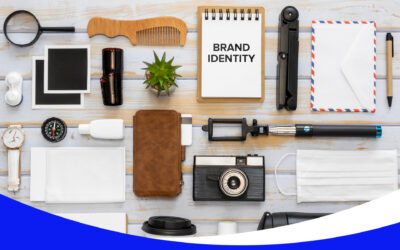Join us on this thrilling journey as we unravel their mysteries, reveal their unique powers, and discover why understanding the battle of Branding vs Design is the key to unlocking business success.
Get ready for a ringside seat to the ultimate showdown!
Definition of Branding
Branding goes beyond mere visual elements; it encompasses the essence and identity of a business. At its core, branding is the process of strategically shaping and curating a unique identity that distinguishes a business from its competitors.
It involves crafting a brand’s personality, positioning, and visual representation to evoke specific emotions and perceptions among its target audience.
Definition of Design
Design, on the other hand, is the deliberate and systematic approach to creating aesthetically appealing and functional elements that enhance the user experience. It is a multidisciplinary field that encompasses various domains such as graphic design, web design, and product design.
Design focuses on the visual and interactive aspects of a brand, aiming to captivate and engage users while aligning with the brand’s values and objectives.
Importance of Branding and Design in Business
Branding and design play indispensable roles in shaping the success of businesses. Together, they create a cohesive and compelling narrative that resonates with the target audience, fosters loyalty, and drives customer acquisition. Let’s delve into the specific significance of branding and design:
Branding’s Impact
Branding establishes an emotional connection between a business and its customers. It helps in building trust, credibility, and recognition. A strong brand identity sets the foundation for long-term success by effectively communicating the business’s values, purpose, and unique selling propositions.
Design’s Influence
Design acts as the visual language that communicates the brand’s essence and creates memorable experiences. It enables businesses to convey their message effectively, ensuring that it aligns with the brand’s identity.
An intuitive and visually appealing design enhances user engagement, fosters positive perceptions, and encourages conversions.
The interplay between branding and design is vital. While branding sets the direction and framework for the brand’s identity, design breathes life into that identity, allowing it to connect with audiences on a visual and experiential level. Together, they form the backbone of a successful business strategy.
Branding Vs Design: Key Differences
When exploring the realms of branding and design, it is crucial to understand the key differences that set them apart.
While branding and design are closely intertwined, they serve distinct purposes and contribute to the overall success of a business in unique ways.
In this section, we will delve into the contrasting aspects of branding and design, shedding light on their focus, objectives, timeframe, tangibility, and role in communication and messaging.
A. Focus and Objectives
Branding and design have different focal points and objectives, despite both being essential components of a comprehensive business strategy.
Branding Focus:
Branding revolves around the strategic development and nurturing of a brand’s identity. It aims to establish a distinct and recognizable brand that resonates with the target audience.
The focus of branding lies in creating an emotional connection, building brand loyalty, and fostering trust. It involves defining the brand’s values, personality, and positioning in the market.
Design Focus:
Design, on the other hand, centers around the visual and functional elements that enhance user experiences.
Design focuses on creating visually appealing and intuitive interfaces, graphics, and products that align with the brand’s identity.
The primary objective of design is to captivate audiences, facilitate seamless interactions, and elevate the overall user experience.
B. Timeframe and Longevity
Another notable difference between branding and design lies in their timeframe and longevity.
Branding Timeframe:
Branding is a long-term strategy that requires careful planning, implementation, and consistent reinforcement.
Building a strong brand identity takes time and ongoing efforts to create brand recognition, loyalty, and association with positive attributes.
Brands evolve and adapt over time, but the core elements of branding tend to have a longer lifespan.
Design Timeframe:
Design, in contrast, often operates within shorter timeframes, especially in projects where immediate visual impact is required.
Design elements can be more flexible and adaptable, allowing businesses to iterate and experiment with different designs to achieve desired outcomes.
However, design trends and preferences can change relatively quickly, necessitating periodic updates and adjustments.
C. Tangible and Intangible Elements
Branding and design involve a combination of tangible and intangible elements that contribute to their respective domains.
Branding Tangibility:
Branding encompasses both tangible and intangible elements. Tangible components include the visual elements such as logos, colors, typography, and packaging that help create brand recognition.
Additionally, tangible aspects also include physical touchpoints like physical stores or product packaging that allow customers to engage with the brand.
Design Tangibility:
Design primarily deals with tangible elements, focusing on creating visually appealing and functional assets.
It involves crafting layouts, graphics, and interactive interfaces that can be directly perceived and experienced by users.
Designers work with concrete materials and tools to bring their creative visions to life.
D. Role in Communication and Messaging
Branding and design play distinct but interconnected roles in shaping a brand’s communication and messaging strategies.
Branding in Communication:
Branding forms the foundation of a brand’s communication and messaging. It provides the guiding principles and values that shape how a brand communicates with its audience.
Branding ensures consistency in messaging across various touchpoints, enabling businesses to convey their unique value propositions and build a coherent brand narrative.
Design in Communication:
Design, on the other hand, supports and amplifies the brand’s communication efforts through visual storytelling.
It helps to communicate messages effectively by creating visually appealing and engaging assets. Design elements such as website layouts, social media graphics, and advertising materials contribute to the overall brand messaging, capturing attention and delivering key information in a compelling manner.
Conclusion
In conclusion, the dynamic interplay between branding and design is essential for businesses seeking to create a lasting impact and connect with their target audience.
While branding sets the stage by crafting a unique identity and fostering emotional connections, design breathes life into that identity through visually captivating and engaging experiences.
To unlock the full potential of your brand, consider partnering with Neu Entity, a leading branding agency based in Singapore. With their expertise in both branding and design, they can help you create a powerful and compelling brand identity that resonates with your target audience.
Related Articles
Let’s Talk!
If what you see here is relevant for you and can help you grow your business or organisation, we’d love to discuss further with you. Drop us a message or schedule an appointment with us.




